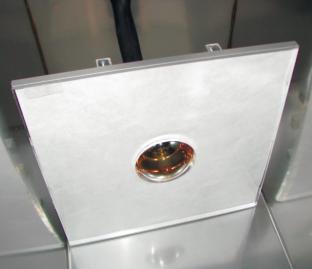切伦科夫探测器用PMT/WLS板光学模块
IF 0.4
4区 物理与天体物理
Q4 PHYSICS, NUCLEAR
引用次数: 0
摘要
该研究的目的是创建一个光学模块,该模块由波长移动(WLS)板、带有波长移动掺杂剂的丙烯酸板和光电倍增管(PMT)组成,满足水切伦科夫探测器的使用要求。给出了PMT作为WLS板模块元件的特性的初步结果,并对WLS板进行了优化设计。WLS掺杂剂的选择及其浓度,以及反射器的类型,都是基于所进行的测试。对移波板的老化性能进行了评价。本文章由计算机程序翻译,如有差异,请以英文原文为准。

PMT/WLS Plate Optical Modules for Cherenkov Detectors
The aim of the study is to create an optical module made of a wavelength shifting (WLS) plate, an acrylic plate with a wavelength shifting dopant, and a photomultiplier (PMT) that meets the requirements for usage in water Cherenkov detectors. Preliminary results of the characteristics of PMT for usage as an element of a module with WLS plate are presented and the optimal design of the plate is developed. The choice of WLS dopants and their concentrations, as well as types of reflectors, are based on the tests performed. An assessment of the wavelength shifting plates’ aging properties was also done.
求助全文
通过发布文献求助,成功后即可免费获取论文全文。
去求助
来源期刊

Physics of Atomic Nuclei
物理-物理:核物理
CiteScore
0.60
自引率
25.00%
发文量
56
审稿时长
3-6 weeks
期刊介绍:
Physics of Atomic Nuclei is a journal that covers experimental and theoretical studies of nuclear physics: nuclear structure, spectra, and properties; radiation, fission, and nuclear reactions induced by photons, leptons, hadrons, and nuclei; fundamental interactions and symmetries; hadrons (with light, strange, charm, and bottom quarks); particle collisions at high and superhigh energies; gauge and unified quantum field theories, quark models, supersymmetry and supergravity, astrophysics and cosmology.
 求助内容:
求助内容: 应助结果提醒方式:
应助结果提醒方式:


